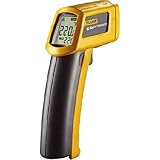I’ve been looking into some programmer editor choices again, this time downloading some that have been recommended (and a few that weren’t). I’ve tired of the clunky feeling and most recently the crashing of Notepad++, and decided I was willing to pay for an editor if it was reasonable overall (and of all things, STABLE!).
Tonight, I’ve downloaded Ultra Edit 14.20.
The first impressions – scared:

I’ve counted 107 top level places / functions / buttons visible on this screen. I believe during setup I selected the “Web Programmer” mode as the default.
I know, I shouldn’t let the little things bother me – but I’m not impressed with their concept of “tabs”:

The tabs don’t contain the content. They’re just an illusion (just good old SysTabControl32 from the common controls library). (Plus, they take up more space vertically because of this odd implementation choice). When that toolbar is undocked:

First impressions – not so good. I’m so overwhelmed by the UI that I don’t feel like trying to even explore the multitude of options presented. Uninstalled UltraEdit. Moving on to next option.






